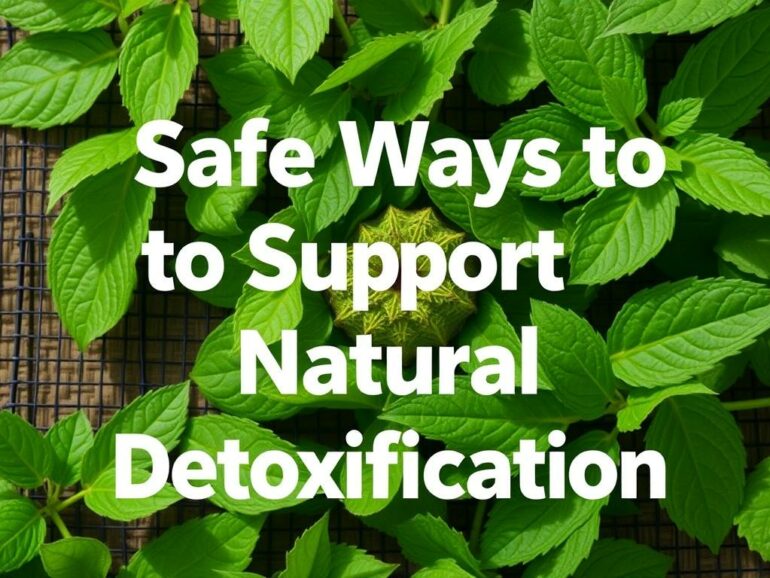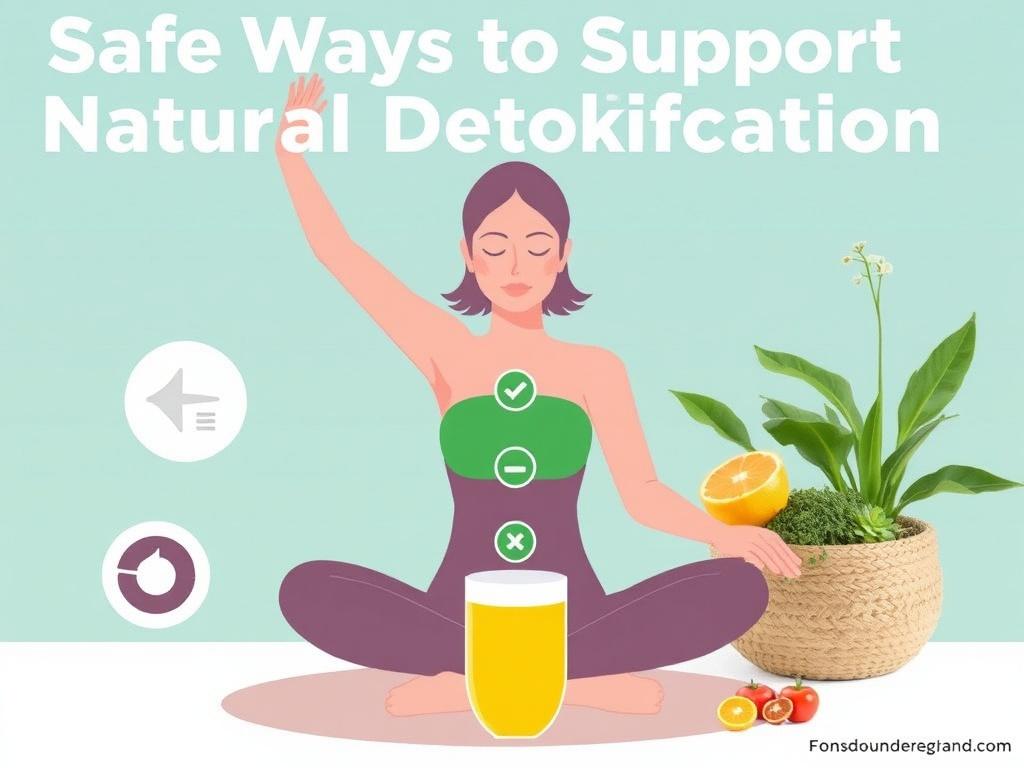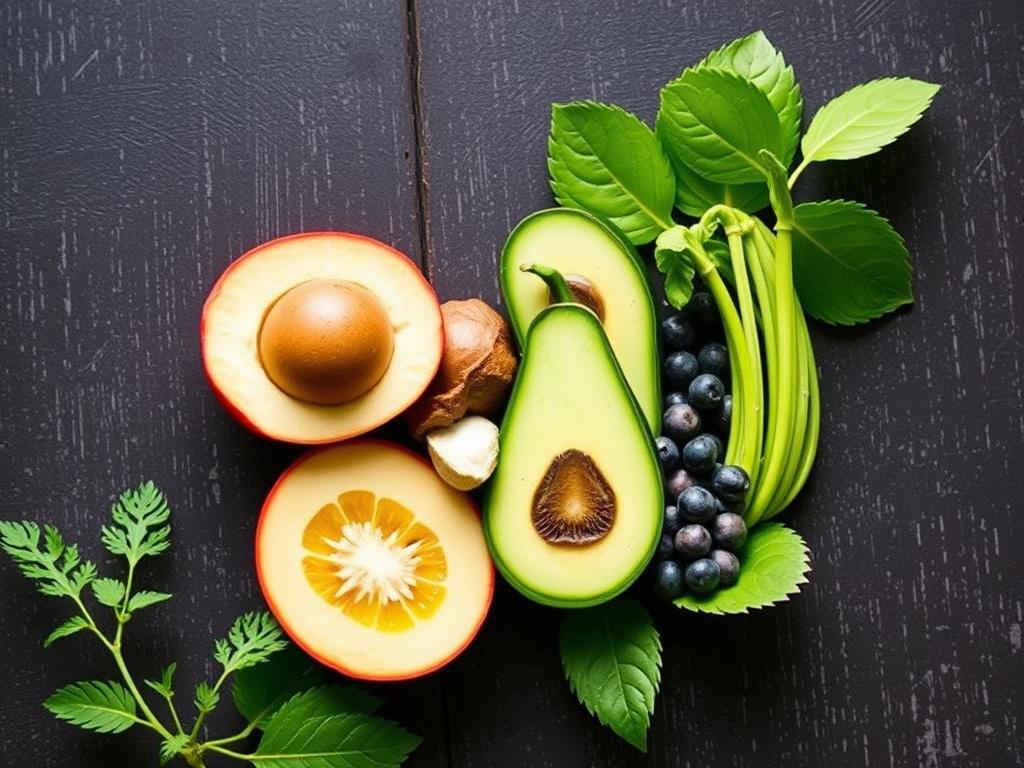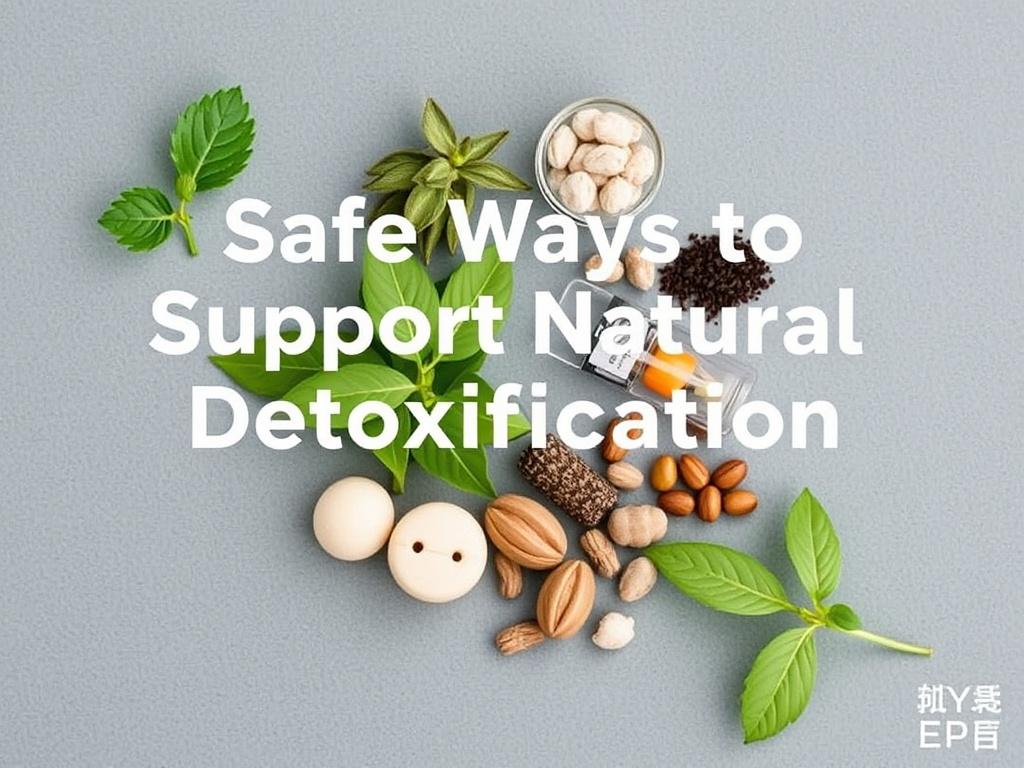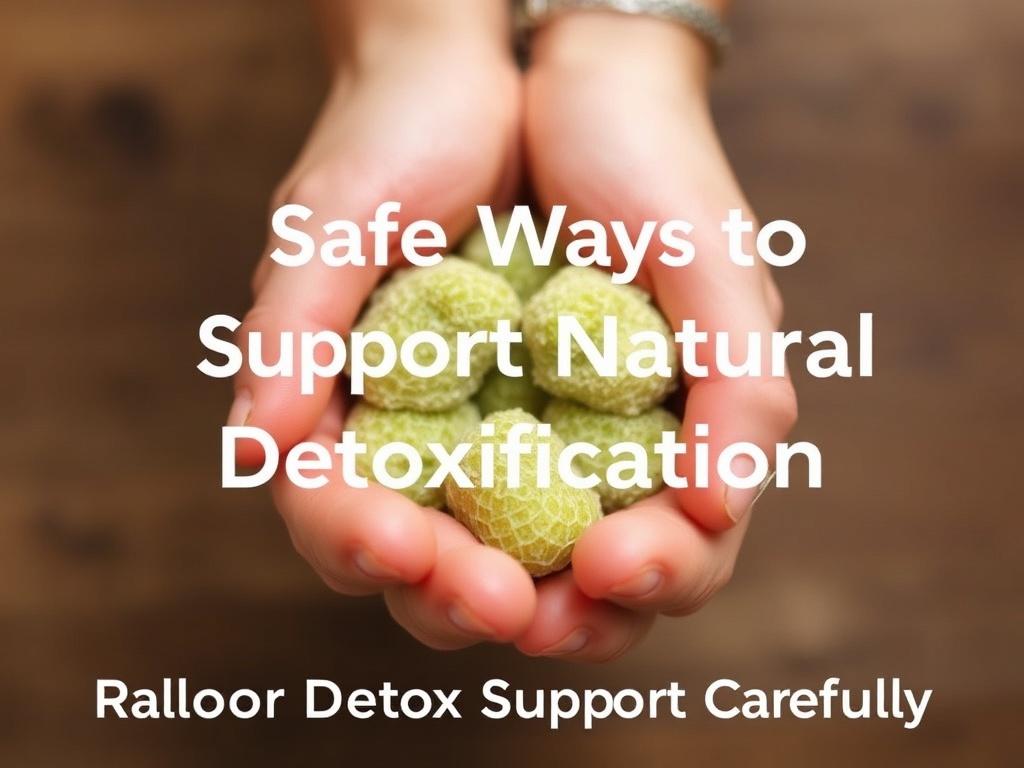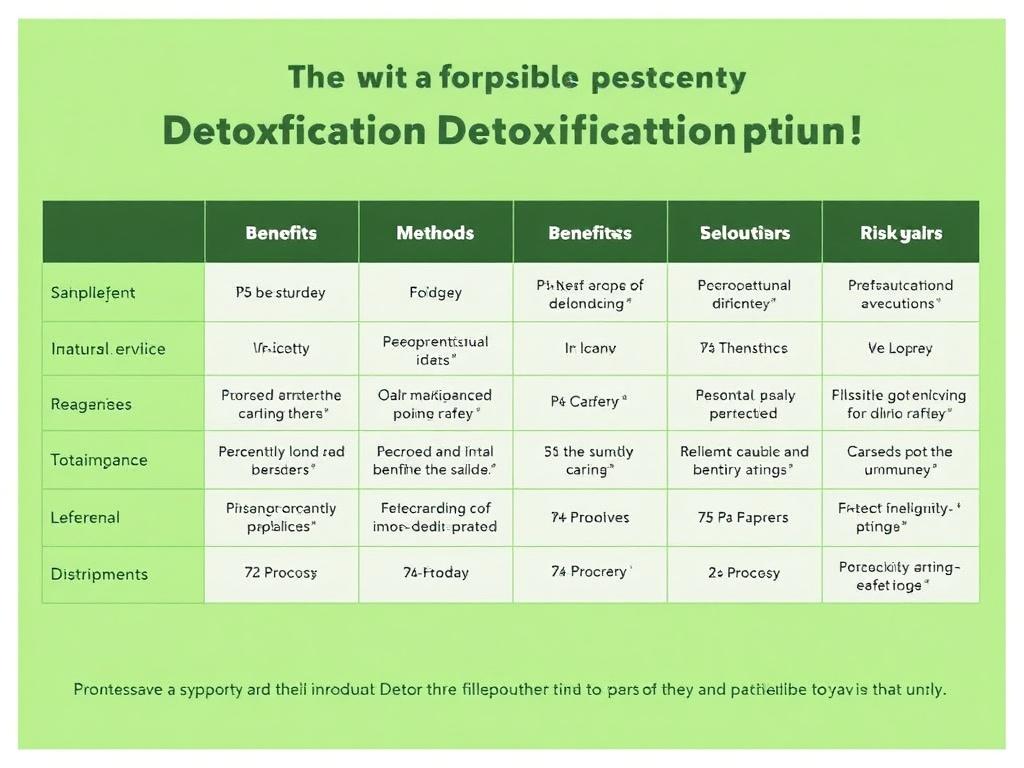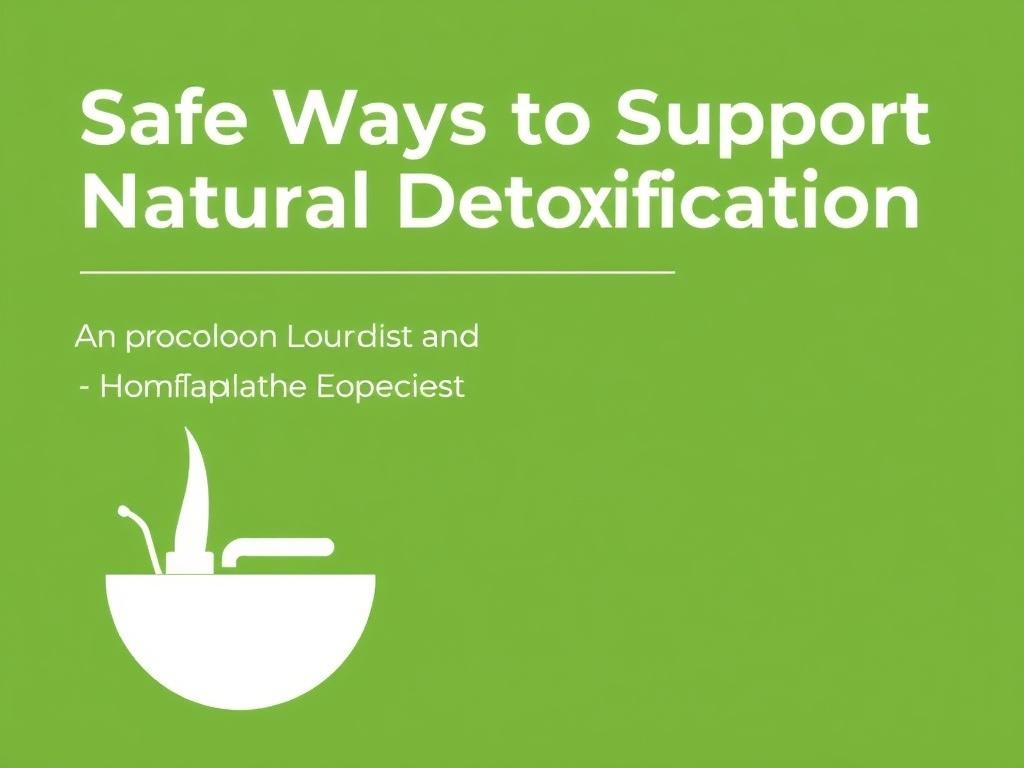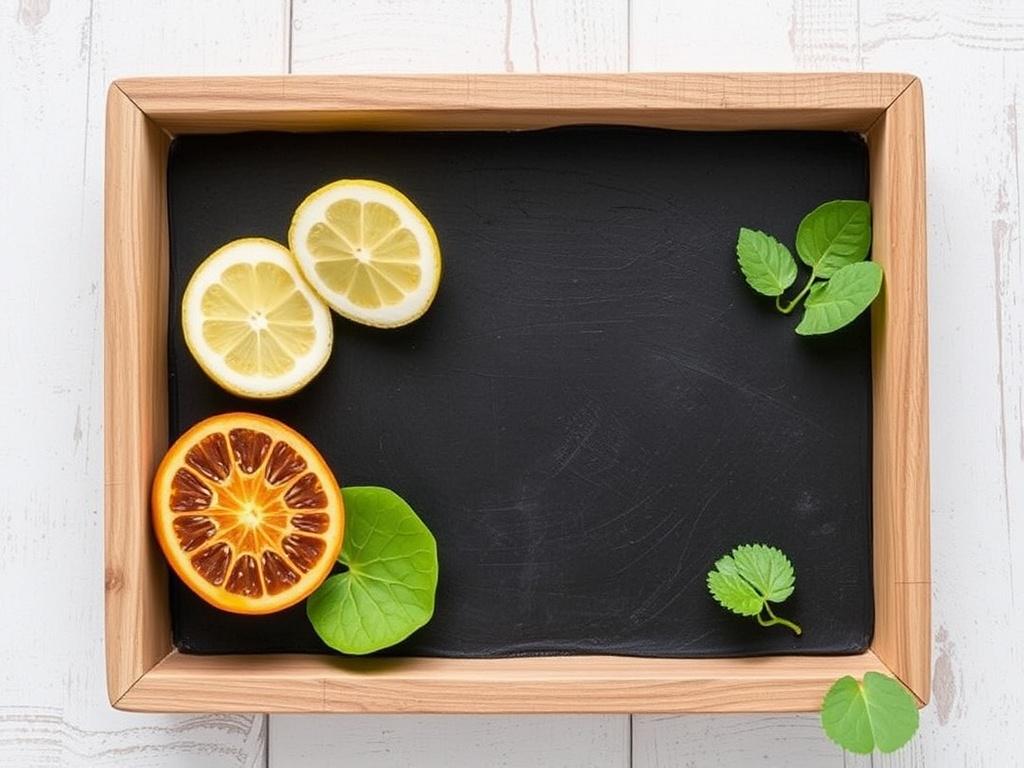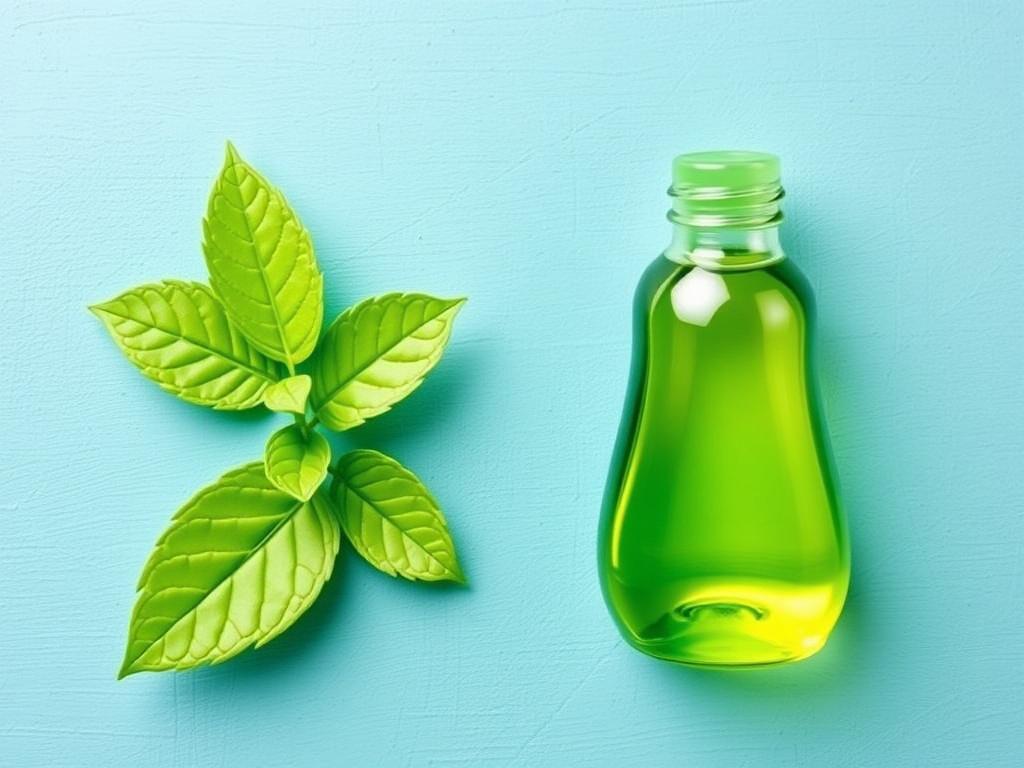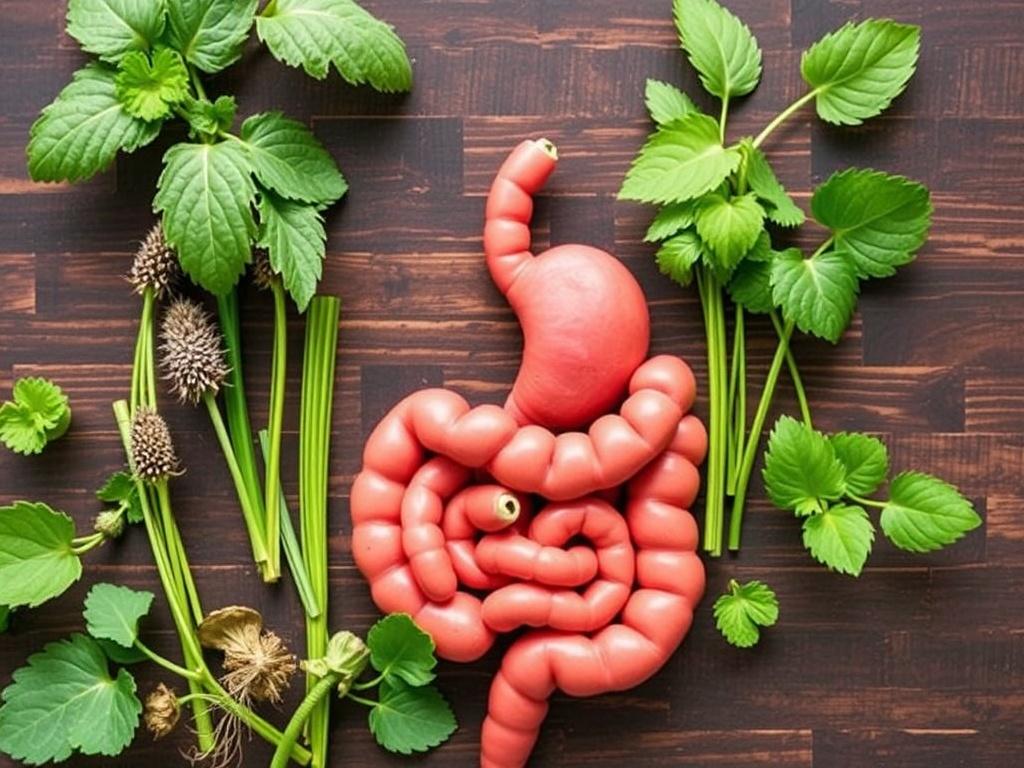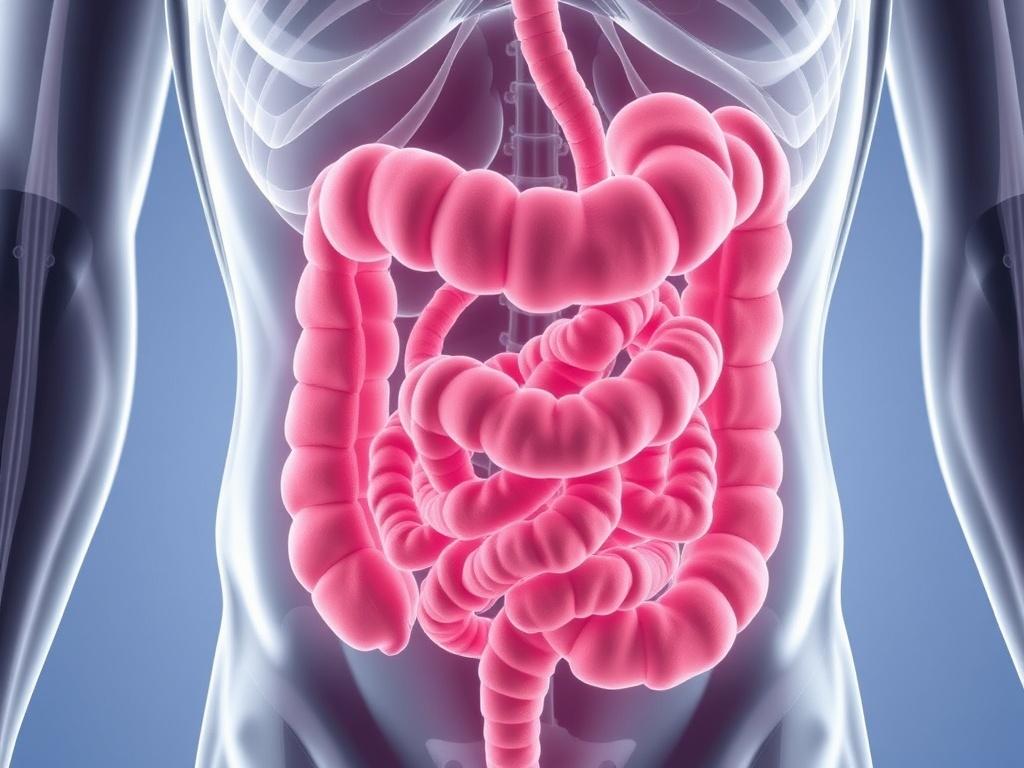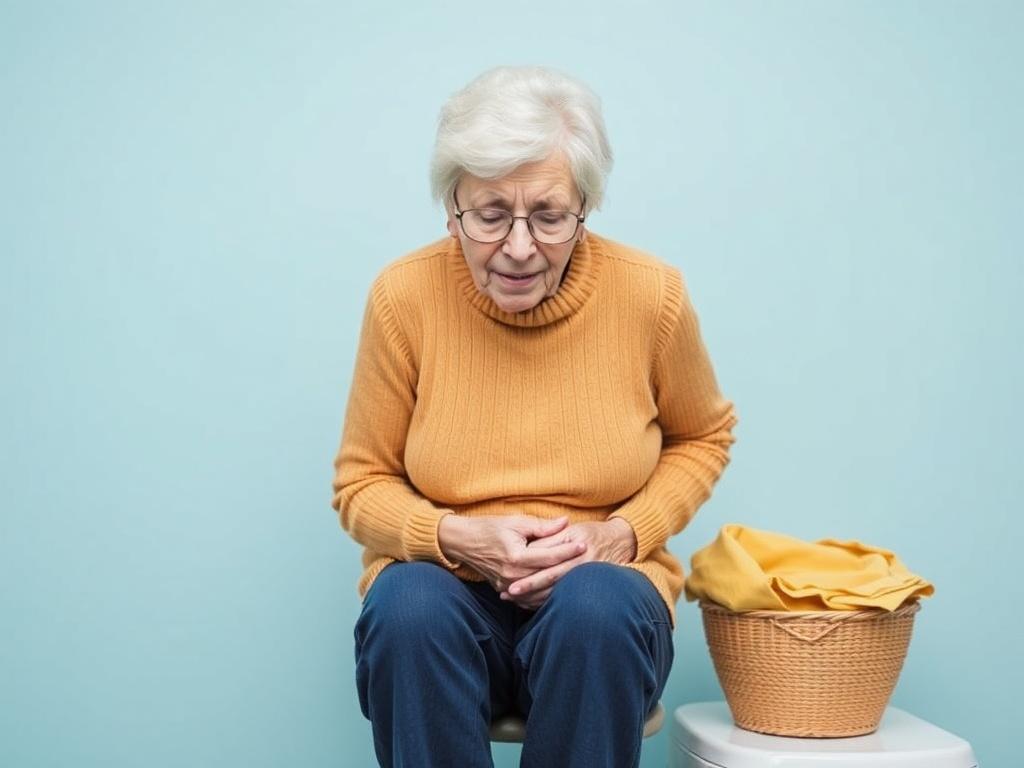People talk about detox like it’s a mysterious ritual you perform once a month: drink a green smoothie, sit in a sauna, and somehow everything “toxicky” melts away. But your body already has a powerful, sophisticated system for removing wastes and protecting you from the daily barrage of chemicals, pollutants, and byproducts of metabolism. The key isn’t dramatic, risky cleanses — it’s supporting those systems in ways that are realistic, sustainable, and safe. In this long-read, we’ll walk through what “natural detoxification” really means, how the body clears unwanted substances, and step-by-step, evidence-informed strategies you can use to make that process work better for you. Expect practical tips, simple daily routines, foods and behaviors that help, and clear warnings about what to avoid.
What Does “Detox” Even Mean?
0
When people say “detox,” they mean a lot of things. Sometimes it’s weight loss, sometimes it’s clearing out fatigue or brain fog, and sometimes it’s a desire to flush out environmental chemicals. Medically, detoxification refers to the biochemical pathways your body uses to neutralize and remove harmful compounds. Those pathways mostly involve the liver, kidneys, lungs, skin, and gut. They process toxins from the environment, drugs, alcohol, and metabolic waste. Supporting detox in a natural, safe way means helping these organs do their jobs more efficiently without introducing harm.
Why the Body’s Systems Matter
Your liver is a chemical factory that transforms fat-soluble compounds into water-soluble ones for elimination. Kidneys filter the blood to remove small, water-soluble wastes. The gut prevents absorption of many compounds and eliminates others in stool. Lungs exhale volatile compounds, and skin participates through sweating. Supporting detox is less about “cleansing” in the dramatic sense and more about giving these organs the resources they need—adequate hydration, nutrients, sleep, and a healthy microbiome—while avoiding practices that can disrupt or overwhelm them.
Principles of Safe, Natural Detoxification
Before diving into specifics, it helps to outline a few guiding principles. Follow these and you’ll reduce the chance of harm while maximizing benefit.
- Support organs, don’t “flush” them: Give the liver and kidneys nutrients and time to do their work. Avoid practices that forcibly push toxins into circulation without proper elimination.
- Moderation over extremes: Rapid weight loss, aggressive colon cleanses, and unregulated supplements can do more harm than good.
- Focus on whole foods: A diet rich in fiber, antioxidants, and adequate protein gives your body the raw materials for repair and detoxification.
- Hydrate safely: Water helps kidney filtration, but hydration isn’t a cure-all. Electrolytes matter if you sweat a lot.
- Individualize: Age, health conditions, medications, and pregnancy change what is safe and effective.
Basic Biology — How Detox Actually Works
It’s reassuring to know what happens when your body meets a toxin. The liver’s biotransformation pathways are often categorized into phase 1 and phase 2 reactions. Phase 1 enzymes modify molecules — sometimes creating reactive intermediates — and phase 2 enzymes attach small molecules like sulfate, glucuronide, or glutathione to make products easier to excrete. For these reactions you need vitamins, minerals, and amino acids. The kidneys filter blood and use active transport to reabsorb needed substances. The gut, aided by the microbiome and fiber, binds and eliminates compounds. Supporting each step prevents a bottleneck where partially metabolized, potentially harmful intermediates accumulate.
Daily Habits That Safely Support Detoxification
Small, consistent habits are the foundation of safe detox support. You don’t need expensive supplements or extreme regimens — lean into lifestyle changes that nurture your body’s own systems.
1. Prioritize Sleep and Stress Management
Sleep is when the brain clears metabolic waste via the glymphatic system. Chronic poor sleep impairs this process and raises levels of inflammation. Aim for consistent sleep patterns and 7–9 hours per night for most adults. Stress triggers hormonal changes (like elevated cortisol) that shift metabolism and may reduce detox capacity. Simple stress-management practices — deep breathing, short walks, mindfulness, or hobbies — are powerful and safe tools to improve your body’s ability to handle toxins.
2. Hydration with Purpose
Water is essential for kidney filtration and for transporting water-soluble metabolites out of the body. A practical rule is to drink to thirst, and more if you’re active, in hot weather, or sweating. For many people, 2–3 liters per day is reasonable, but individual needs vary. If you sweat heavily, consider adding electrolyte sources (sodium, potassium, magnesium) rather than relying on plain water alone, which can dilute electrolytes. Avoid overhydration extremes unless guided by healthcare professionals.
3. Eat Whole Foods that Support Liver and Gut Health
The building blocks for detox are found in food. Antioxidant-rich fruits and vegetables, cruciferous vegetables (broccoli, cauliflower, Brussels sprouts), sulfur-containing foods (garlic, onions), high-fiber whole grains, legumes, and adequate lean protein all support hepatic enzymes and the microbiome. Fiber binds certain substances in the gut and helps ferry them out in stool, reducing reabsorption. Protein supplies amino acids like cysteine, a precursor to glutathione, a key antioxidant and conjugation agent in phase 2 detoxification.
4. Move Regularly — But Sensibly
Exercise boosts circulation, helps lymphatic flow, supports metabolic health, and can improve mood and sleep — all indirectly aiding detoxification. Aim for a balance of aerobic exercise, strength training, and flexibility. Avoid shockingly intense regimens that lead to rapid muscle breakdown if you’re untrained; those can temporarily burden the kidneys due to myoglobin release. A good baseline is 150 minutes of moderate aerobic activity weekly plus two days of resistance work.
5. Support the Microbiome
A healthy gut microbiome helps metabolize certain compounds and prevents harmful substances from getting absorbed. Include prebiotic fibers (onions, leeks, garlic, asparagus, bananas) and fermented foods (yogurt, kefir, sauerkraut) as tolerated. If you take antibiotics, consult your clinician about restoring gut flora. Probiotics can help some people, but choose evidence-based strains and products and avoid unnecessary high-dose or unregulated mixes without professional counsel.
Foods and Nutrients That Help Natural Detoxification
There’s no single “detox food,” but a group of nutrients consistently supports detox pathways. Here’s a practical breakdown you can integrate into meals.
Key Foods to Include
- Cruciferous vegetables: Broccoli, kale, Brussels sprouts — support liver enzyme activity.
- Allium vegetables: Garlic, onions — provide sulfur compounds for conjugation reactions.
- Colorful fruits and vegetables: Berries, citrus, leafy greens — rich in antioxidants and vitamin C.
- High-fiber foods: Whole grains, legumes, flax, chia — bind bile and help eliminate fat-soluble compounds.
- Lean proteins: Poultry, fish, legumes — provide cysteine and other amino acids for glutathione synthesis.
- Healthy fats: Olive oil, avocados, fatty fish — support cell membranes and overall metabolic health.
- Hydrating foods: Cucumbers, watermelon, soups — contribute to fluid balance.
Vitamins, Minerals, and Compounds to Prioritize
These are commonly important for detox pathways. Most people can get them from a varied diet, but some individuals may need supplementation under medical advice.
- Glutathione precursors: Cysteine (from protein), N-acetylcysteine in some medical contexts (only under guidance).
- Vitamin C and E: Antioxidants that protect tissues during detox reactions.
- B vitamins: Especially folate, B6, and B12 — involved in methylation pathways.
- Selenium and zinc: Trace minerals that support antioxidant enzymes.
- Magnesium: Important for hundreds of enzymatic reactions and muscle function.
Safe Tools and Practices — What Works and What to Avoid
There are plenty of products marketed as “detox” solutions. Some are harmless, some are helpful, and some can cause real harm. Let’s separate the safe, evidence-based approaches from those to avoid or treat cautiously.
Safe, Evidence-Supporting Practices
- Sauna and sweating: Moderate sauna use can support comfort and cardiovascular health, and may help excrete some compounds via sweat. Stay hydrated and avoid excessive heat exposure. Those with unstable heart conditions, low blood pressure, or pregnant people should consult a provider first.
- Increased dietary fiber: Helps remove certain compounds via stool and supports the microbiome.
- Regular physical activity: Improves circulation and metabolic health.
- Mindful use of evidence-based supplements: For example, milk thistle for some liver conditions has moderate evidence, but quality and dosing matter; discuss with a clinician.
- Medical detox for alcohol or drug dependence: Supervised clinical detoxification is essential and should be done by professionals.
Practices to View with Caution or Avoid
These are commonly promoted but often carry risks:
- Extreme juice cleanses and very low-calorie “detox” diets: They can cause nutrient deficiencies, electrolyte imbalances, and gallbladder issues. Rapid weight loss releases stored toxins (in fat) into circulation, which can stress the liver and kidneys.
- Unsupervised chelation therapy: Designed to remove heavy metals, chelation agents can bind essential minerals and cause dangerous side effects if misapplied.
- Excessive sweating or sauna use without rehydration and electrolyte balance: Leads to dehydration and kidney strain.
- High-dose unregulated supplements: Some herbal products are contaminated or hepatotoxic; quality control is variable. Always research brands and discuss with a clinician, especially if you take medications.
- Colonic irrigation: Can disturb gut flora, damage mucosa, and carry infection risks if equipment is not sterile. Routine use is not supported by evidence.
Practical Meal Ideas and a Sample Day to Support Natural Detoxification
You don’t need a special “detox menu”; you need a diet that consistently provides nutrients that support the body’s processes. Below is a simple, balanced sample day that emphasizes support for liver, gut, and kidney health.
| Meal | Example | Why it helps |
|---|---|---|
| Breakfast | Oatmeal with blueberries, chopped walnuts, and a spoonful of ground flaxseed; green tea | Fiber supports gut motility; berries supply antioxidants; walnuts and flax provide omega-3s and lignans. |
| Snack | Plain yogurt with sliced banana or a small apple and a handful of almonds | Probiotics may support gut flora; banana provides prebiotic fiber; nuts for healthy fats and magnesium. |
| Lunch | Mixed salad with leafy greens, roasted beets, chickpeas, avocado, pumpkin seeds, olive oil lemon dressing; whole grain bread | Beets contain compounds that may support liver function; chickpeas add protein and fiber to support glutathione precursors and bile elimination. |
| Snack | Carrot sticks and hummus | Fiber and vegetable phytochemicals; hummus contributes protein and legumes for stable blood sugar. |
| Dinner | Baked salmon with steamed broccoli and quinoa | Salmon provides omega-3s; broccoli supports phase 2 enzyme activity; quinoa offers complete protein and fiber. |
| Evening | Herbal tea (e.g., chamomile) and a small piece of dark chocolate | Calming routine supports sleep; dark chocolate in moderation provides antioxidants. |
Simple Recipes to Try
Here are two easy, nutrient-dense recipes that support detox pathways without being faddish.
- Roasted Cruciferous Bowl: Toss broccoli and cauliflower florets with olive oil, turmeric, black pepper, and garlic. Roast until golden. Serve over brown rice with chopped parsley and a squeeze of lemon.
- Beet and Lentil Salad: Cook green lentils until tender. Mix with roasted diced beets, chopped arugula, chopped red onion, and a dressing of olive oil, apple cider vinegar, and Dijon mustard. Add toasted walnuts for crunch.
Supplements and Herbs — Use with Care
Supplements can help specific deficiencies or conditions, but they’re not necessary for everyone and sometimes do harm. Quality, dosing, and medical oversight are crucial. Here’s a practical approach.
Supplements That May Be Helpful (with Guidance)
- Vitamin D: Many people are deficient. Adequate levels support immune and metabolic function, indirectly aiding detox resilience; test levels before supplementing.
- B-complex vitamins: Useful if your diet is low in B vitamins, which are essential for methylation pathways.
- Magnesium: Helpful for muscle function, relaxation, and sleep; common deficiency.
- Probiotics: May help after antibiotic use or for specific gastrointestinal conditions. Choose clinically studied strains and products.
- Milk thistle (silymarin): Used for liver support in some contexts; evidence is mixed and product quality varies.
Supplements to Be Wary Of
Be cautious with products promising rapid “detox” or dramatic weight/fat loss, or those containing chemicals with limited regulation. Avoid high-dose herbal mixtures without clinical evidence, especially if you take medications that affect the liver or blood clotting.
Special Populations — Tailor Detox Support Carefully
Some people need extra caution. If any of the following apply to you, talk with a healthcare provider before making major dietary changes, starting herbal supplements, or trying aggressive detox protocols.
- Pregnant or breastfeeding people — many herbs and supplements can cross the placenta or be excreted in milk and may be unsafe.
- People with kidney disease — fluid and electrolyte balance is critical, and certain supplements are contraindicated.
- People with liver disease — the liver’s ability to metabolize substances is altered; supervised care is necessary.
- Those on multiple medications — supplements can interact with drugs (e.g., St. John’s wort alters many medicines via liver enzymes).
- Children and older adults — dosing and tolerance vary, and their physiology can change safety profiles.
How to Recognize Red Flags and When to Seek Help
Sometimes attempts at “detox” or underlying exposures cause symptoms that need medical attention. Watch for severe abdominal pain, persistent nausea or vomiting, jaundice (yellowing of skin or eyes), dark urine, light-colored stools, confusion, fainting, or very rapid heart rate. These may signal liver failure, severe dehydration, electrolyte disturbances, or other urgent issues. If you suspect severe poisoning or overdose, contact emergency services or a poison control center immediately. For chronic concerns about exposure (e.g., lead, mercury), consult a clinician who can recommend appropriate testing and, if necessary, safe medical removal techniques under supervision.
When Environmental Exposures Require Professional Attention
If you’ve lived in or been exposed to a known contaminated environment (old houses with lead paint, occupational exposures, some fish and seafood with high mercury), professional testing and guidance are essential. Medical detoxification — for example, chelation for certain heavy metal poisonings — is a specialized intervention. Don’t attempt DIY chelation or heavy-metal “detoxes” at home. These treatments require monitoring for mineral depletion, kidney function, and cardiac risk.
Practical, Step-by-Step Plan to Support Natural Detox Safely
Here’s a week-to-month plan you can adapt. It’s neither glamorous nor dramatic, but it’s sustainable and grounded in physiology.
Week 1: Foundation
- Establish a consistent sleep schedule and aim for 7–9 hours nightly.
- Increase water intake to a level that keeps urine pale yellow; monitor electrolytes if you sweat a lot.
- Add one extra serving of vegetables to each meal, including a cruciferous vegetable once a day.
- Reduce or eliminate processed foods and sugary drinks.
Weeks 2–4: Build Momentum
- Include two servings per week of fatty fish for omega-3s.
- Add a daily 20–30 minute walk; progress to moderate aerobic sessions most days.
- Introduce fermented foods or a probiotic if tolerated and appropriate.
- Try a weekly digital detox or dedicated stress-reduction session to support sleep and hormonal balance.
Month 2 and Beyond: Maintain and Personalize
- Assess progress: energy, sleep quality, digestion, mood.
- Consult a clinician for tailored nutrient testing (vitamin D, B12, kidney/liver panels) if you have persistent symptoms.
- Consider targeted supplementation only with professional guidance.
- Keep avoiding extremes — no crash diets, unsupervised chelation, or regular colonics.
Comparative Table: Common “Detox” Methods — Benefits and Risks
| Method | Potential Benefit | Risks/Concerns |
|---|---|---|
| Increased whole-food diet (fruits, vegetables, fiber) | Supports liver enzymes, microbiome, elimination; sustainable | Low risk; ensure adequate calories and nutrients |
| Short-term juice cleanse | May reduce calorie intake and increase vegetable intake temporarily | Low protein, low fiber, risk of nutrient deficiency, blood sugar swings |
| Sauna use | May aid relaxation, circulation; boosts sweat-mediated excretion modestly | Dehydration, electrolyte loss, cardiovascular stress if misused |
| Colon cleansing/irrigation | May relieve constipation temporarily | Risk of infection, mucosal damage, electrolyte imbalance; disrupts microbiome |
| Chelation therapy (unsupervised) | Can remove certain heavy metals when used medically | Can remove essential minerals, cause kidney damage, and risk of severe side effects if unsupervised |
| High-dose herbal “detox” supplements | Some herbs have liver-supportive compounds; evidence varies | Contamination, drug interactions, hepatotoxicity, inconsistent dosing |
How to Talk with Your Clinician About Detox
If you’re thinking about actions to support natural detoxification, discuss it with your clinician, especially if you take medications or have chronic conditions. Useful things to bring up include: your goals (e.g., improved energy, managing exposure), current diet and supplement list, recent lab results, and any exposure history (occupational, environmental, or accidental). Ask whether specific nutrient testing is appropriate, whether any supplements are advisable, and if there are any red flags for your situation. A team approach — involving your primary care provider, a registered dietitian, or a clinical toxicologist when relevant — gives you the safest, most practical guidance.
Questions Your Clinician May Ask
- Do you have symptoms like yellowing of skin, dark urine, or unusual fatigue?
- Are you taking prescription or over-the-counter medications, including herbal products?
- Have you been exposed to known contaminants (lead, mercury, solvents)?
- What does your typical diet and fluid intake look like?
- Do you have any chronic conditions (kidney disease, liver disease, heart disease)?
Long-Term Habits That Keep Your “Detox” Systems Healthy
Think of detox as a lifelong partnership with your body rather than a periodic reset. The habits that protect against toxic buildup are also those that optimize general health and longevity: balanced nutrition, regular movement, good sleep, stress management, and sensible avoidance of known hazards like smoking and excessive alcohol. Cultivate environments that reduce unnecessary exposures — ventilate your living spaces, choose low-toxicity household products when possible, and follow safety protocols at work to limit occupational exposures.
Reducing Everyday Exposures
Practical steps to reduce day-to-day exposure are often simple and effective: wash produce to remove residues, avoid heating plastic containers in the microwave, choose fragrance-free personal care products if you’re sensitive, and use air filters in spaces with poor ventilation or high outdoor pollution. These are low-cost, low-risk actions that reduce the body’s cumulative burden over time.
Final Thoughts
Natural detoxification doesn’t require dramatic measures. Your body already has a sophisticated system to neutralize and remove harmful substances, and the safest, most effective way to “detox” is to support those systems with consistent, evidence-based habits. Eat varied whole foods, stay hydrated, move, sleep well, manage stress, maintain a healthy gut microbiome, and be cautious with supplements and extreme regimens. If you have special conditions or suspect a significant exposure, seek professional testing and guidance rather than attempting unregulated, potentially dangerous interventions at home. With thoughtful, steady practices, you’ll help your natural detoxification systems do what they do best: protect and restore balance.
Conclusion
Supporting natural detoxification is about steady, sensible lifestyle choices that supply the nutrients and conditions your liver, kidneys, gut, lungs, and skin need to eliminate wastes — not quick fixes or extreme cleanses. Prioritize sleep, hydration, whole foods rich in fiber and antioxidants, regular movement, and stress management; be cautious about unregulated supplements and invasive detox procedures; and consult a healthcare professional when exposures or medical conditions make detox support more complex. These safe strategies will help your body handle the everyday challenges of modern life while keeping you healthy and resilient.
Читайте далее: